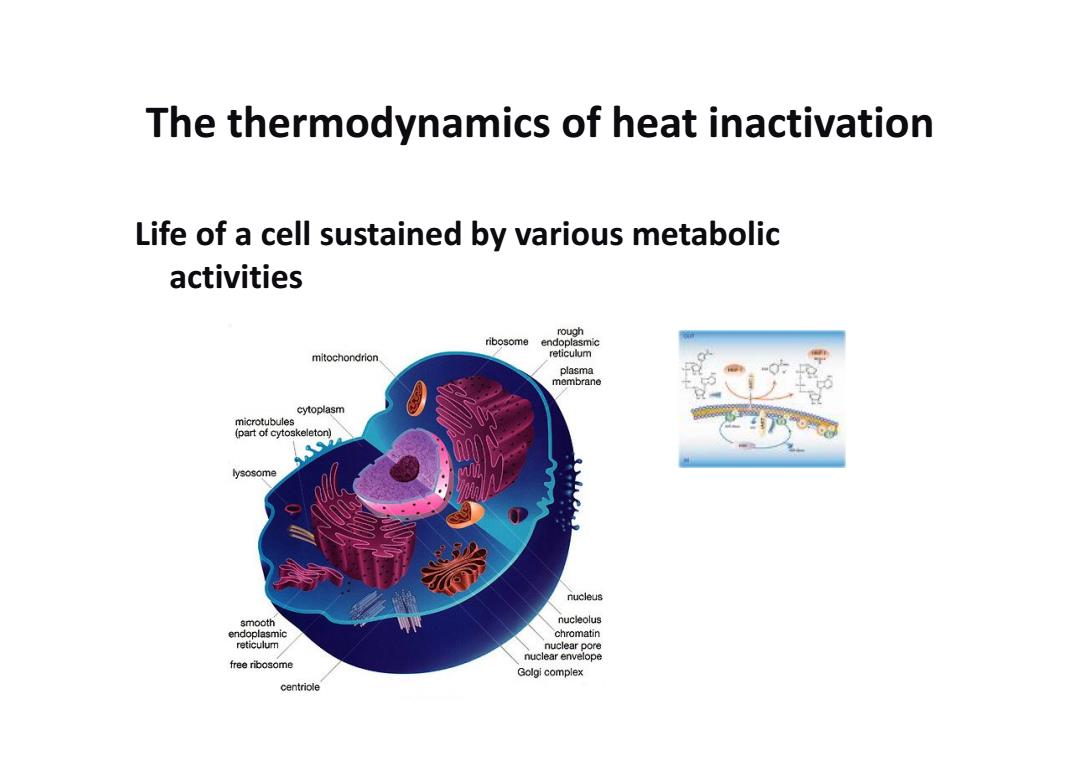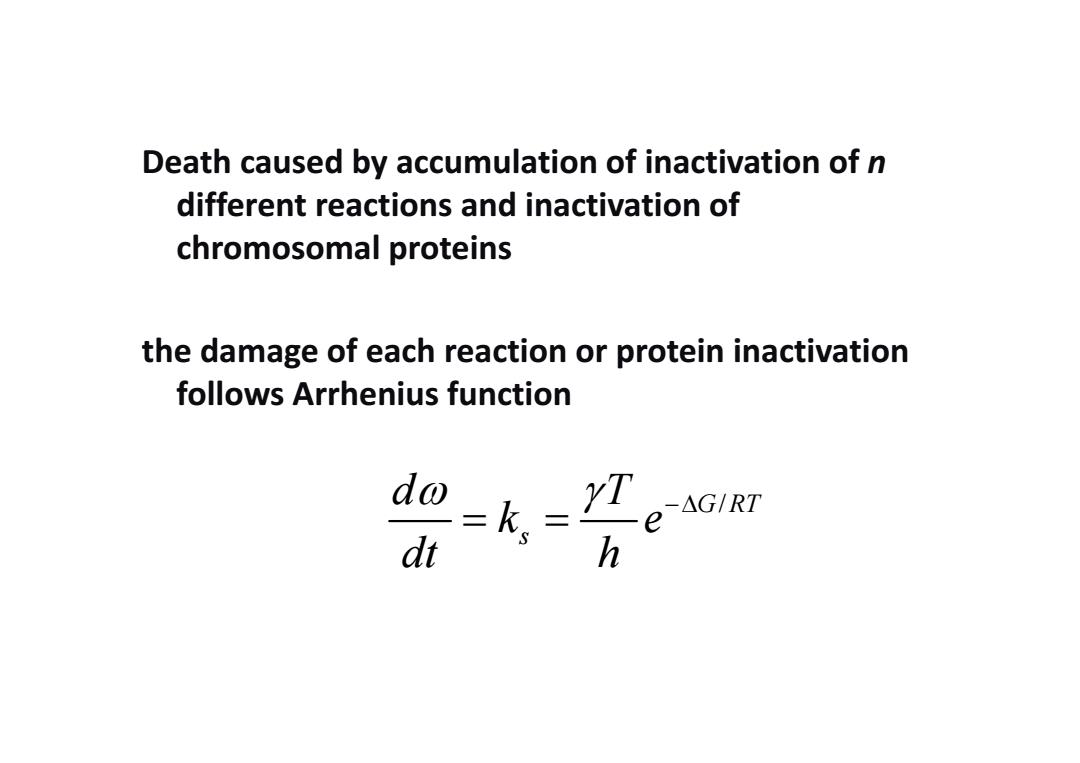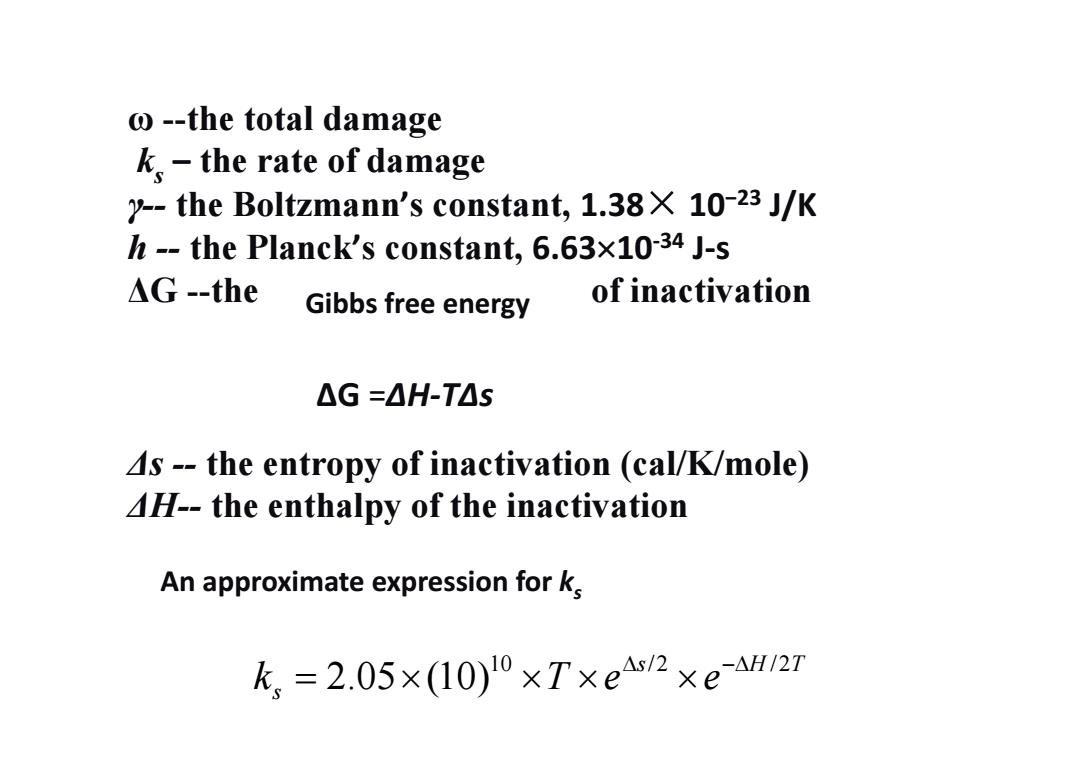
Mechanisms of heat induced damage Cytoplasmic and nuclear protein denaturation DNA and RNA changes and cellular membrane function change Tissue necrosis,coagulation and vaporization of tissue Damage degree function of tissue temperature and treatment time
Mechanisms of heat induced damage • Cytoplasmic and nuclear protein denaturation • DNA and RNA changes and cellular membrane function change • Tissue necrosis, coagulation and vaporization of tissue Damage degree : function of tissue temperature and treatment time

The thermodynamics of heat inactivation Life of a cell sustained by various metabolic activities rough ribosome endoplasmic mitochondrion reticulum plasma -o membrane cytoplasm microtubules (part of cytoskeleton) 9 lysosome nucleus smooth nucleolus endoplasmic chromatin reticulum nuclear pore nuclear envelope free ribosome Golgi complex centriole
The thermodynamics of heat inactivation Life of a cell sustained by various metabolic activities

Death caused by accumulation of inactivation of n different reactions and inactivation of chromosomal proteins the damage of each reaction or protein inactivation follows Arrhenius function =k, YT-AGIRT e dt h
Death caused by accumulation of inactivation of n different reactions and inactivation of chromosomal proteins the damage of each reaction or protein inactivation follows Arrhenius function G RT / s d T k e dt h

o--the total damage k.the rate of damage y--the Boltzmann's constant,1.38X 10-23 J/K h--the Planck's constant,6.63x10-34 J-s △G-the Gibbs free energy of inactivation △G=△H-T△S 4s--the entropy of inactivation (cal/K/mole) 4H--the enthalpy of the inactivation An approximate expression for k k,=2.05×(10)l0×T×e4s2×eaH/27
ω --the total damage ks – the rate of damage γ-- the Boltzmann’s constant, 1.38× 10−23 J/K h -- the Planck’s constant, 6.6310‐34 J‐s ΔG --the of inactivation Δs -- the entropy of inactivation (cal/K/mole) ΔH-- the enthalpy of the inactivation ΔG =ΔH‐TΔs Gibbs free energy 10 /2 /2 2.05 (10) s HT s k Te e An approximate expression for ks